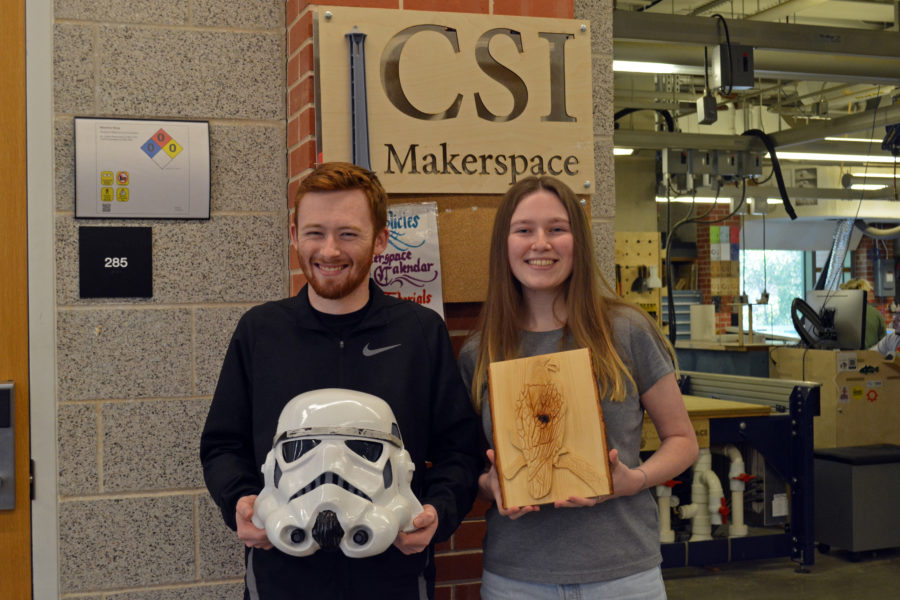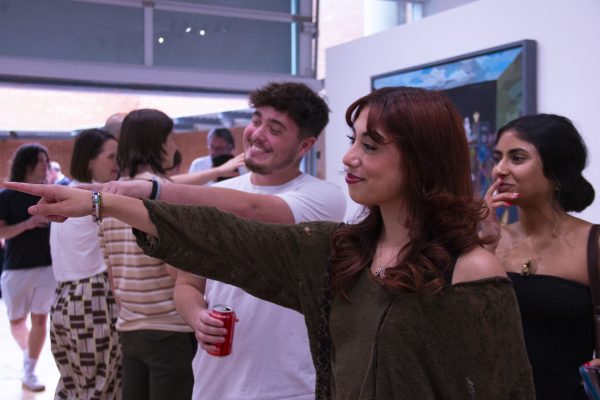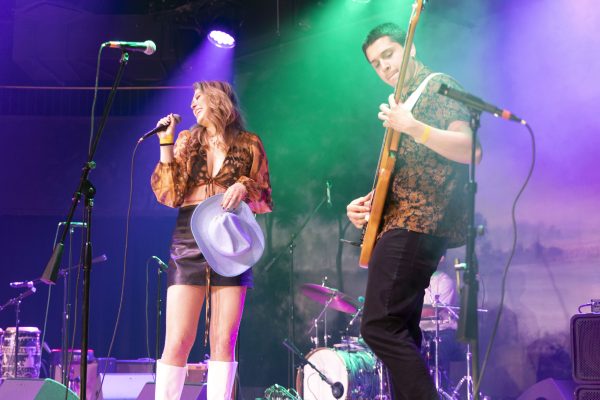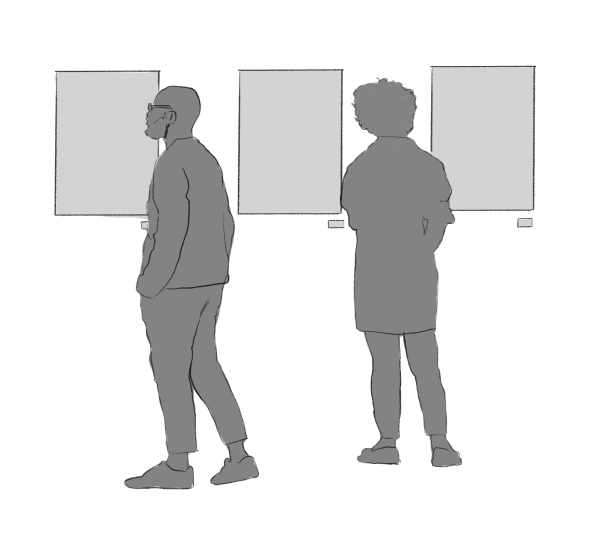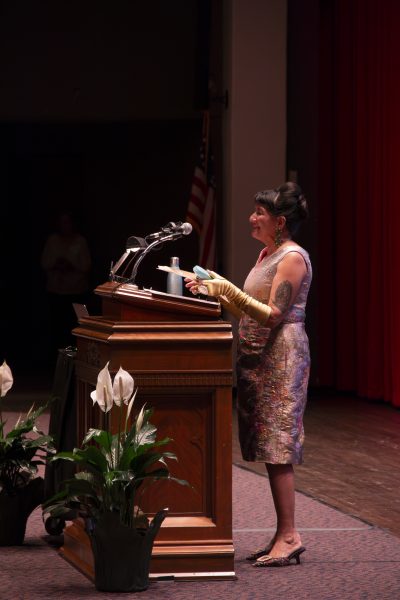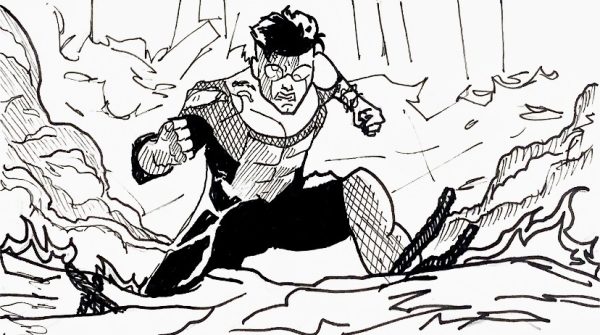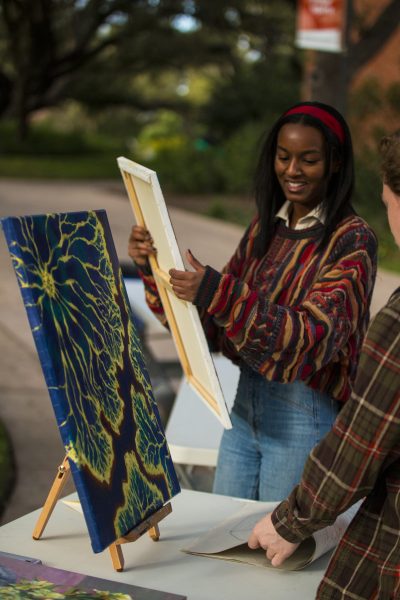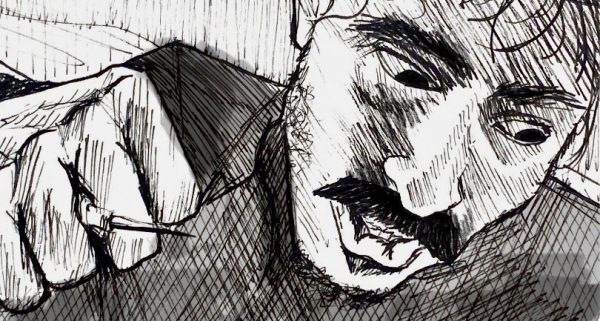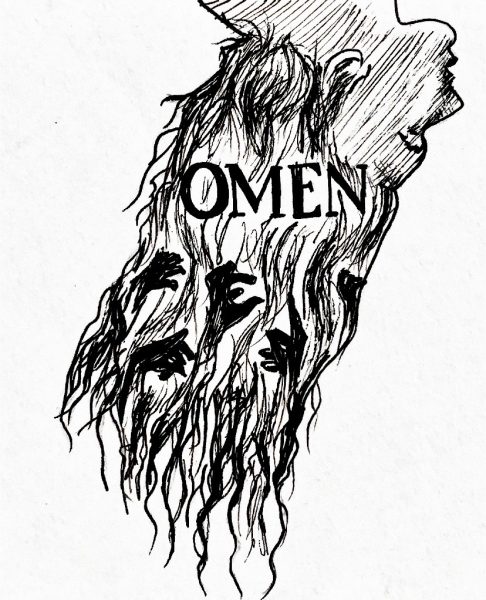MakerSpace highlights student creativity
See how students are using campus resources to support their personal interests
Dawson Durr and Grace Robertson show off their designs made in the MakerSpace.
The Center for the Sciences and Innovation (CSI) is home to many of the university’s technological resources, most of which are housed in the heart of the building: the MakerSpace. Located at the corner of the building which faces Marrs McLean, the MakerSpace is a large design space comprised of a wood, electronics and machine shop. The space is free to use and constantly bustling with students and faculty.
Although the space is typically used by students in engineering or entrepreneurship programs, the space is open for any general use, whether related to academic pursuits or not. Those who have immersed themselves in the space have found it to be a place they can explore and grow their interests with resources they may not have had access to before.
This is especially true for students like Grace Robertson, first-year engineering major. Robertson was introduced to the space through her Engineering Design and First-Year Experience courses, whose assignments often required Robertson to use the space. Since then, she has also used the space to work on personal projects.
“I began my eagle wood carving in early November of 2022 and completed it mid-December,” Robertson said. “Since then, I’ve added more refined detail. … In all, it took me about 25 hours to complete my first project. I’ve started a bigger project this semester, though. It’s a landscape scene which features an elk as the focal point. So far, I’ve spent an upwards of 15 hours on this, and I anticipate that I’m only halfway done.”
She has since continued to adjust her work and methods with the help of MakerSpace workers.
“I really love the atmosphere of the MakerSpace, especially how open it is. When I first entertained the idea of woodcarving, Ryan [Hodge, machine shop technician] gave me some pointers about how to work with the various materials,” Robertson said. “The MakerSpace is super accessible, so I can go in and get any tool I might need or use a particular machine whenever it’s open.”
The MakerSpace has resources to support a large variety of projects. Dawson Durr, first-year engineering major and data science minor, has used the space for 3D printing and painting.
“I’m currently working on a full set of stormtrooper armor. I started this project at the beginning of this semester. So far, I only have the helmet and chestplate fully assembled and almost finished,” Durr said.
Durr prints the pieces for his costumes in a 3D printer he has in his dorm before bringing them to the MakerSpace for assembly and processing. He shares that the shop has a wide variety of materials and tools that he can use to refine his pieces and hopefully create a screen-accurate set of armor.
MakerSpace student and faculty workers offer machinery training and help with specific interests upon request. Drew Gray, senior engineering major and MakerSpace student worker, has expressed interest in getting non-engineering majors to explore and use the space.
“One of our goals is to create a better environment for non-STEM students to get involved in creating/design,” Gray said. “ASME [the American Society for Mechanical Engineers] is hosting student workshops where MakerSpace students lead and teach projects. There is also an Intro to Making class [ENGR 2192] that focuses on getting non-engineering students involved. … We’ve had people from business, bio, geology and art classes take this course and come up with some cool final projects. We encourage all students to come on in and try things out.”
Even if interested students are unable to enroll in the Intro to Making class, the space is open most weekdays, and student and faculty workers are always available to answer any questions. If a student or faculty member has an interest in creating something of their own or just exploring the various design tools, they are encouraged to stop by.
“The space let me try out things I’ve always wanted to try but never had the opportunity to before coming to Trinity,” Robertson said.
“It’s also a great place to try new things and take risks,” Durr said. “So do some research and get started.”
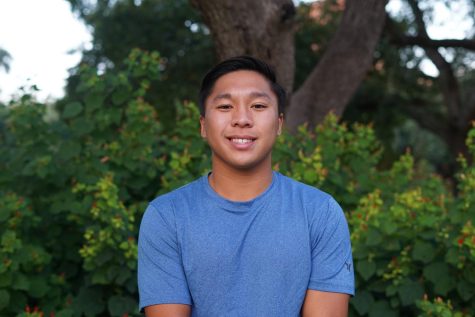
I am a senior photographer from Houston, Texas majoring in Biology on the pre-PA track. I love sports photography and just being able to capture a moment...

